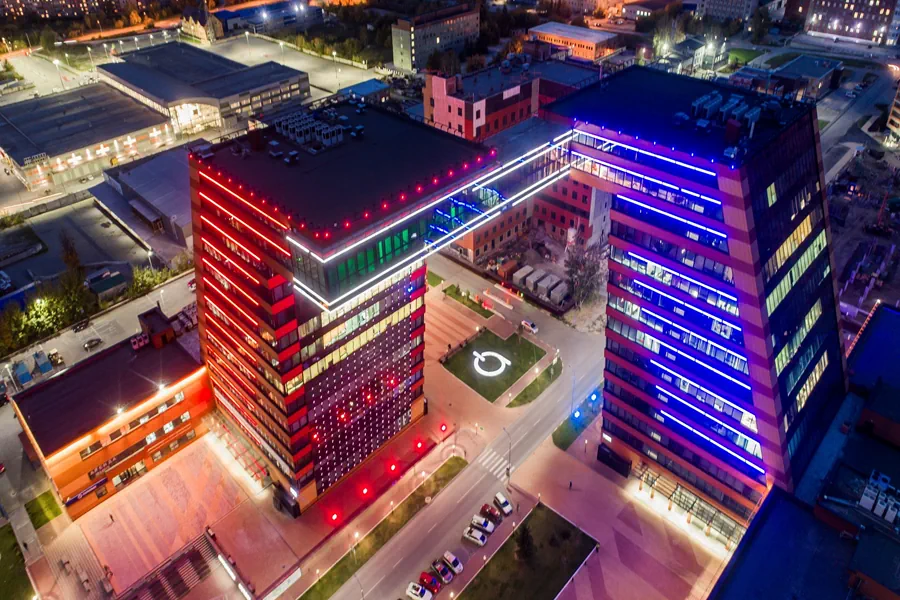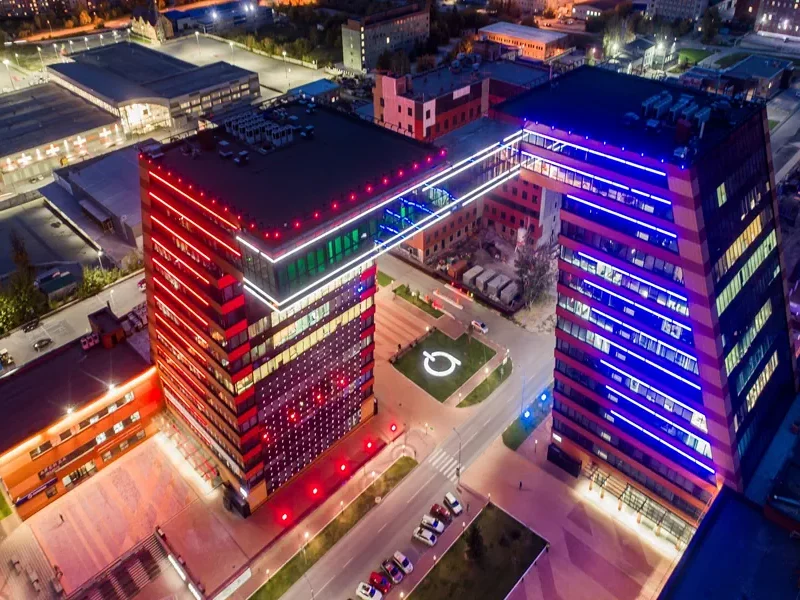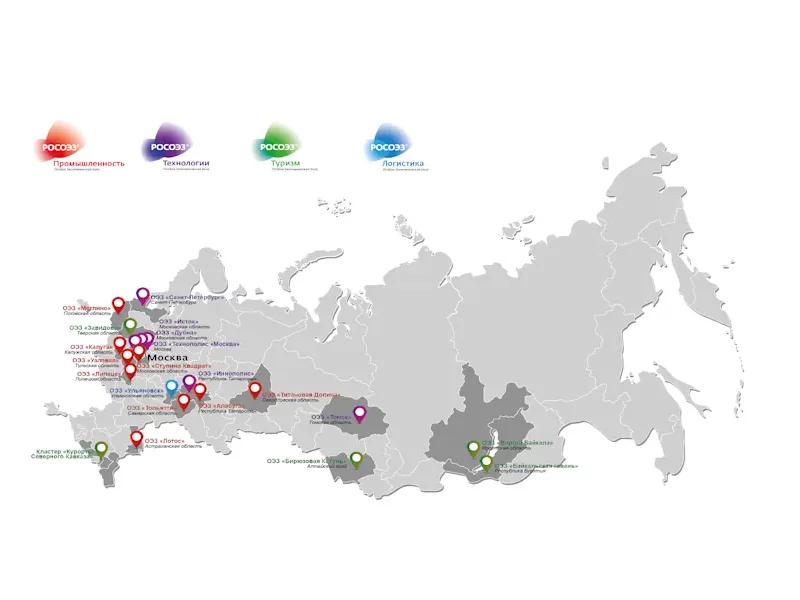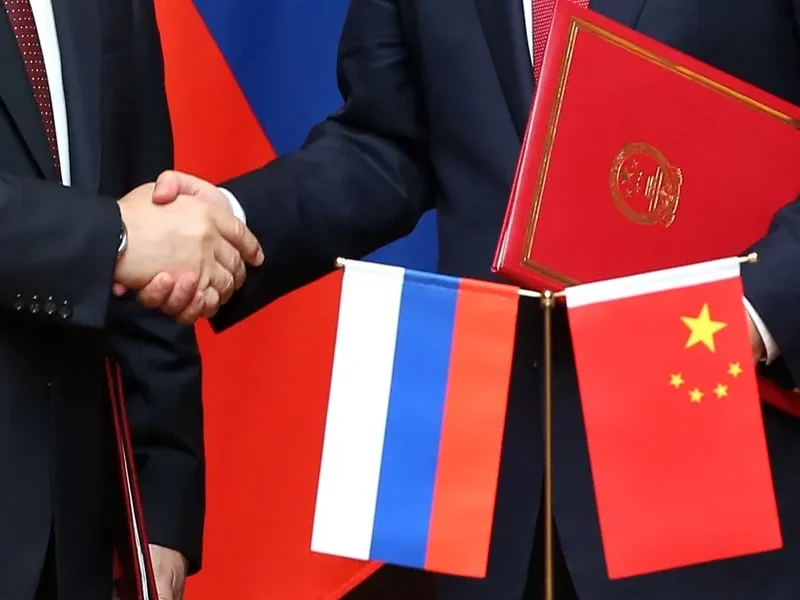Russia hosts dozens of technoparks where enterprises can organize production, develop and implement scientific research into manufacturing. Many residents evolve from startups into well-known brands, finding new partners and investors, and gaining access to resources for further development.
Russian Technoparks: History and Present
In 1990, the Technological Park was established at Tomsk State University — termed a ‘new,’ but ‘widely adopted in developed countries’ form of territorial integration of science, education, and production, facilitating the swift integration of R&D into manufacturing. By that time, technological parks were already operating in the USSR (for example, one was active at Tallinn Technical University), but the Tomsk Technopark was recognized as the first in the national education system.
In the 1990s and 2000s, the number of technoparks steadily increased, surpassing 190 by 2023. Over 90 of them are industrial, possessing all the necessary infrastructure for manufacturing products, including based on residents’ scientific developments. Regions leading in the number of technoparks include Moscow Region, Tatarstan, Bashkortostan, and Kaluga Region. However, technological parks are present even in the most remote parts of the country, such as Siberia and the Far East.
A modern technopark in Russia is a space where, on a unified territory:
- Project ideas are generated, scientific concepts are developed.
- Prototyping takes place.
- The launch of production is initiated.
- Necessary scaling of production is ensured.
Main residents of technoparks include research structures, manufacturing companies, startups, and educational centers. Technoparks are established in special industrial zones, at universities, and scientific centers in various regions of the country.
Let’s explore the specifics of the activities of the largest Russian technological parks, as presented in the overview of technoparks in Russia and Belarus by the Ministry of Industry and Trade of the Russian Federation (from 2022).
Overview of Leading Technoparks

The experts of the department have identified the leading technoparks based on criteria such as:
- Investment attractiveness of the region
- Industrial, scientific-technical, and investment activity
- Level of infrastructure
- Competitiveness considering global factors
It is noteworthy that in the best technoparks, according to the Ministry of Industry and Trade, the majority of residents (up to 90-100% of the total) are small and medium-sized enterprises.
Currently, the leading technoparks in Russia include:
- “Elma” (located in Moscow, founded in 2015).
Technopark area: 5.7 hectares. Total floor space: over 60,000 square meters.
Residents’ expenditures on R&D (all economic indicators are for the year 2021 and beyond) — over 5.2 billion rubles, revenue — over 39.6 billion rubles.
The park was created to support the development of innovative technological enterprises in the small and medium-sized business segment. It includes laboratories, research centers, and industrial platforms. The unified territory provides the necessary resources for turning ideas and concepts into real production.
Currently, “Elma” hosts over 90 resident companies, employing around 2,000 people. The products and technologies of these enterprises are in demand in Russia and abroad. Among the key residents are ATOL (cash register equipment), “Exis” (measurement instruments), and “Melitta” (air disinfection equipment).
- “Polyus” (Moscow, 2016).
Premises: 74.6 thousand square meters. Area: 6.8 hectares.
Residents — over 37, jobs — over 2,100, revenue — over 10.2 billion rubles.
Created to intensify production and facilitate the exchange of experience between enterprises in the laser and optical industry. It helps develop small and medium-sized businesses in technological segments. The main directions of residents’ activities include the production of rangefinders, locators, gyroscopes, sensors, semiconductor lasers, and components for optical communication. Metalworking, software development, and developments in biomedicine are also carried out.
Key residents include VOSPI (production of fiber-optic networks), “Dolomant” (electronic equipment), “Technolum” (production of transparent structures).
- “Zhigulevskaya Dolina” (Samara Region, 2010).
Premises: 65.3 thousand square meters, area: 28.9 hectares.
Residents — 140, revenue — over 10.8 billion rubles, jobs — over 2,100.
The main areas of specialization are industry (automotive, aviation, chemical), and transportation engineering. A necessary range of engineering communications has been formed for residents, ensuring the localization of production. The institution includes a congress center, a children’s technopark, and infrastructure for excursions and leisure.
Key residents — “RI Group” (tool production), “ATS-Auto” (prototype development for the automotive industry), “Autocomponent Engineering — 2” (thermoplastic products). Companies receive targeted support measures, ensuring the development and commercialization of developments.
- Morion Digital (Perm Krai, 2018).
Area: 6.8 hectares, premises: 85.8 thousand square meters.
Residents — over 40, over 5,300 jobs, revenue — over 53 billion rubles.
It is one of the largest private technoparks, hosting both small companies and corporations. The main areas of activity are the development of communication systems, robotics, and artificial intelligence. The main task, as voiced by the creators of the technopark, is to ensure accessibility to personnel, investment, and intellectual resources for businesses.
Major residents include “ER-Telecom Holding” (telecommunications), “Bright Soft” (geodata software), “Satellite” (software development).
- “Kalibr” (Moscow, 2015).
Area: 11.5 hectares, premises: 92.1 thousand square meters.
Residents — over 85, jobs — over 1,400, revenue — over 16.9 billion rubles.
The history of the institution dates back to the 1930s when an enterprise for the production of measuring instruments was organized on the future technopark’s territory. In 2015, “Kalibr” became a private organization that aids the development of companies in instrumentation, drone production, hydrogen energy, and medical research.
The technopark has a test site for unmanned aerial vehicles, a data processing center, and a children’s technopark. Among the main residents are “Rubitech” (system integration) and “Car X Technologies” (software).
- “University” (Sverdlovsk Oblast, 2015).
Area: 51.2 hectares, premises: 27.1 thousand sq. m.
Residents – over 100, more than 1200 jobs, revenue – over 4.9 billion rubles.
It serves as a regional operator and an accredited center of “Skolkovo.” It assists industrial enterprises and small and medium-sized businesses in developing, enhancing competitiveness, and attracting investments. It collaborates with Russian and international structures to implement initiatives in the scientific and technical direction.
Key residents include “Reinnolts” (environmental technologies for industry) and the Ural Polytechnic College (utilizes the training ground of the technopark to address educational tasks).
- “Technopark-Mordovia” (Republic of Mordovia, 2019).
Area: 8.8 hectares, premises: 36.8 thousand sq. m.
Residents – over 30, jobs – over 660, revenue – over 2.3 billion rubles.
The institution brings together scientific, educational, and industrial enterprises, providing resources for the development of knowledge-intensive industries. The technopark provides conditions for implementing developments in instrumentation, lighting technology, optoelectronics, fiber-optic communication, and biotechnology.
Renowned representatives of the Russian scientific community and expert communities support the development of the technopark. Major residents include “Optical Fiber Systems” (optical fiber production) and “RM Rail Engineering” (design center for wagons and containers).
- “Lenpolygraphmash” (St. Petersburg, 2010).
Area: 4.4 hectares, premises: 73.2 thousand sq. m.
Residents – over 330, over 6000 jobs, revenue – over 14.6 billion rubles.
Notably, it unites industrial, technological companies, as well as those engaged in creative activities such as design, architecture, and urban planning solutions, and educational activities.
Industrial infrastructure, services for prototyping, design, and organizing pilot production are available to residents.
Key residents include “Roboclub” (robotics training for children), “Rexoft” (software development), and “LabPak” (research in natural and technical sciences).
- West Siberian Innovation Center (Tyumen Oblast, 2008).
Area: 1 hectare, premises: 12.1 thousand sq. meters.
Residents – over 60 (all SMEs), employees – over 180, revenue – over 5.6 billion rubles.
The technopark assists residents at all stages of the production process, from formalizing the concept to product release and expanding the market. It provides assistance in finding partners and investors, promoting developments with significant commercialization potential.
Major residents include “ARS-Prom” (supply of roofing and facade materials), “Tyumengazstroymash” (production of trailers for commercial vehicles), and “James Development” (development of state systems for urban planning, geoportals, cartographic tools).
- “Slava” (Moscow, 2008).
Area: 2.8 hectares, area: 30.9 thousand sq. m.
Residents – over 60 (also all SMEs), over 1000 jobs, revenue – over 9 billion rubles.
The technopark was created with the support of the city government and is located in the industrial zone “Vorontsovo.” It allows companies to place laboratories, research centers, and workshops for industrial production. All these resources enable the organization of a unified scientific and production process.
Key residents include “DNA Technology TS” (production of medical equipment), “S-Innovations” (production of wires based on high-temperature superconductors), and “ChromsystemsLab” (scientific research in natural and technical sciences).
Summary
Technoparks are present in many regions of Russia, engaging in various directions related to science, manufacturing, software development, and other technological solutions. For residents, opportunities are open to organize various types of units in a single territory. Technoparks assist in finding investors, partners, and entering products into new markets.
Разрабатываем Стратегии для собственников бизнеса в целях оптимизации группы компаний, решения нестандартных задач и продажи активов. Оказываем услуги по сопровождению сделок M&A, управлению непрофильными активами и проектами в целом.













